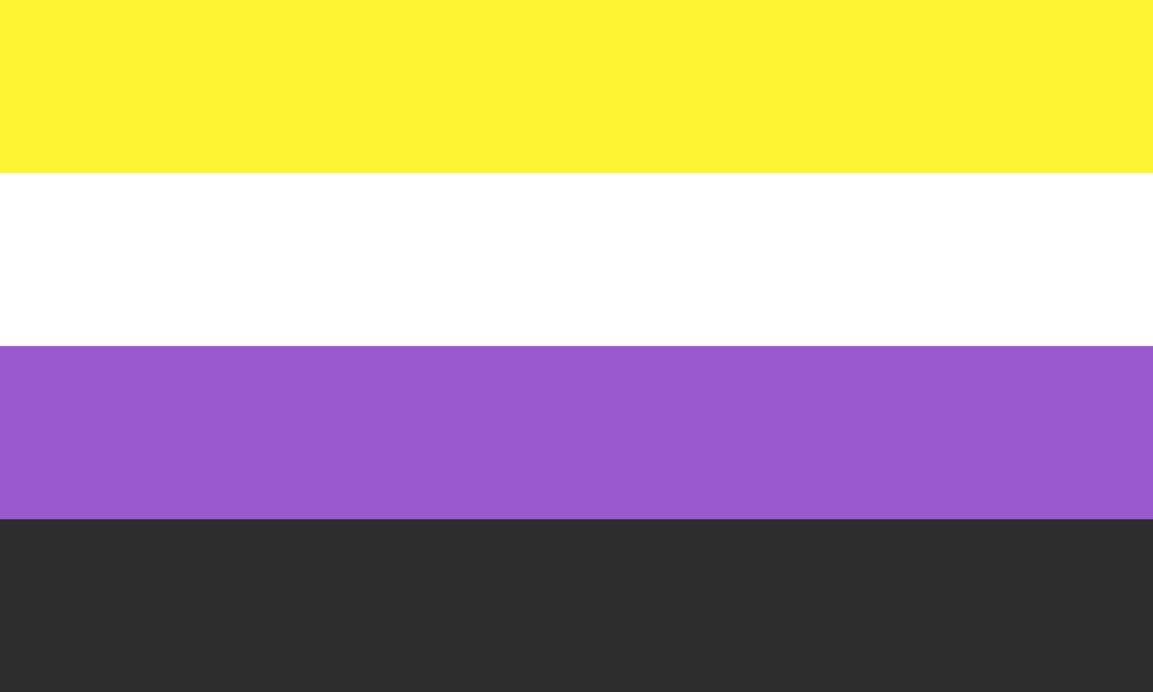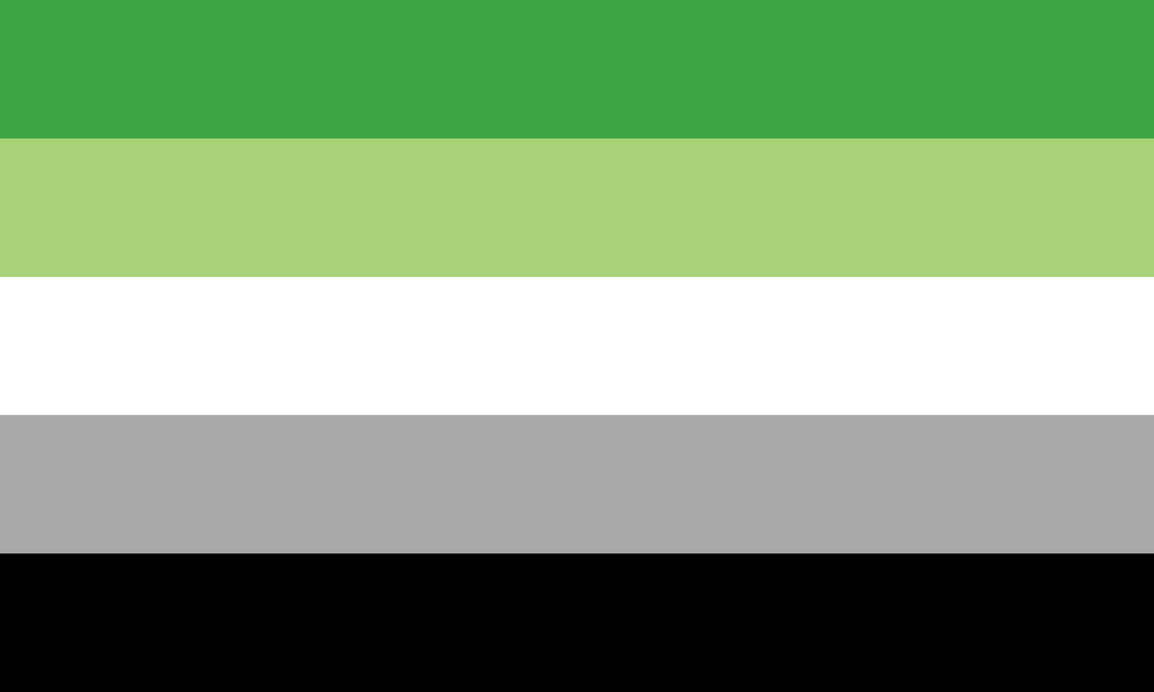The Great Big Pride Flag Timeline
Gilbert Baker’s rainbow flag is widely recognized as the symbol for the LGBTQ+ community. However, the flags of our community are as diverse as the community itself. Below you will find a guide to pride flags, so you can recognize the diversity of sexual and gender identities celebrated this Pride month when you see their colors flying.
The first pride flag was designed by artist Gilbert Baker in 1978 for the San Francisco Gay Freedom Day. It is the prototype for the worldwide symbol of LGBTQ+ pride we know today. These eight colours were included for their meaning: pink for sexuality, red for life, orange for healing, yellow for sunlight, green for nature, turquoise for art, indigo for serenity and violet for spirit. It was supposed to represent the diversity of the community. Within a year the pink strip had been removed, because the pink fabric used for them was not largely available, leaving a flag with seven colours.
In 1979 the turquoise was removed and the indigo was changed to a royal blue. This is the rainbow pride flag that is currently used around the globe. The meaning of the colours have changed as well: red for life and sexuality, orange for friendship and healing, yellow for energy and vitality, green for serenity and nature, blue for harmony and artistry and violet for spirit and gratitude.
In 1998 the bisexual pride flag was designed by Michael Page, after concluding that bisexuals felt almost no connection to the rainbow pride flag and wanting to make them feel included. Originally the colours symbolized: pink for same sex attraction, blue for attraction to the opposite sex and purple as a combination of these two, meaning attraction to both sexes. Today the colours are read in a different way: pink as attraction to female/femme people, blue for attraction to male/masculine people and purple for attraction to non-binary people.
In 1999, Monica F. Helms designed the transgender pride flag. The baby pink and baby blue represent colours that are usually assigned to boys and girls. The white stands for the people who are in transition, or who identify as gender-neutral. The symmetry of the flag represents the idea that no matter how you fly this flag it is always correct, which signifies transgender people finding correctness in their lives.
The first lesbian flag was designed in 1999, by gay man and graphic designer Sean Campbell. It is an inverted black triangle with a white labrys in it on a purple background. The black triangle is a direct reference to the black triangles lesbians were made to wear by the Nazis during WWII. The labrys, a double-headed axe, is associated with the Amazons from ancient mythology. Lesbians had been using this as a symbol of lesbian feminism since the early 1970’s, as it is also a Mediterranean symbol for matriarchal power. The purple represents queer women and is connected to Greek poet Sappho, who used violets when she spoke about romantic love for women.
The pansexual flag was designed by Jasper V in 2010. They introduced the flag to signify the difference between bisexuality and pansexuality (attraction to all genders), because it was thought that the definition of bisexuality (attraction to both male and female gender) excluded trans people. The colours represent the following: blue for people on the male spectrum, pink for people on the female spectrum and yellow for non-binary or genderqueer people.
Also in 2010, photographer and video artist Marilyn Roxie designed the genderqueer flag. Genderqueer is a term that can mean different things for different people, but is generally defined as a gender identity that neither man nor woman, it could be a mix of genders, and it could be fluid. The flag is composed of three stripes and the colours represent: lavender for androgyny, white for people who are agender and dark green for gender identities outside of the binary.
This asexual pride flag was chosen by vote by the asexual community in 2010. Its colours represent the following: black for asexuality or the lack of sexual attraction, grey for identities related to asexuality such as demi-sexuality and purple for the community. The white stripe represents allosexuality, which doesn’t describe the gender you’re attracted to, but rather the fact that you’re sexually attracted to someone at all. The term was introduced to avoid labelling one group as asexual and the other as ‘normal’, implying the former is not normal.
In 2012 the genderfluid flag was created by JJ Poole. The flag is meant to represent people whose gender expression changes over time. The pink represents femininity, white for all genders, purple for both masculinity and femininity, black for the lack of gender and blue for masculinity.
This polysexual flag was designed in 2012 and published on Tumblr by Samlin. It is similar to the bisexual and pansexual flag, as all these sexualities involve the attraction to multiple genders. However, a separate flag was made because polysexuals are attracted to people of multiple, but not all, genders. Pink represents the attraction to people who identify as female, blue to those who identify as male and green to those who identify as non-binary and other gender identities outside the binary. Of course, there are many similarities between bisexuality, pansexuality and polysexuality, and the different identities mean different things to each individual.
The intersex flag was created in 2013 by Morgan Carpenter. The flag has no stripes, but a purple circle on a yellow background. Yellow and purple are again neither pink or blue, staying away from the binary. The circle represents wholeness and completeness, the right to be who and how anyone the intersex community wants to be.
The greysexual flag was designed by Milith Rusignuolo and shared through Wikipedia on June 21, 2013. Greysexual refers to those who don’t completely identify with the label asexual, as they experience sexual attraction sometimes, but also don’t experience it as frequently as allosexual individuals. The purple symbolizes asexuality, grey for greysexuality and white for allosexuality.
The non-binary pride flag was designed by then seventeen year old activist Kye Rowan in 2014. It has four stripes, which represent the following: yellow for being outside traditional gender identities, white (the combination of all colours) for those who identify with having many genders, purple for fluidity of gender and people who identify as somewhere between male and female on the spectrum, and black (the absence of colour) for those who identify as agender.
The aromantic flag was created by Cameron in 2014, and got published on Tumblr first. The green stripes represent the aromantic spectrum, the white represents non romantic forms of love and attraction, the black and grey represent the diversity of the aromantic community.
Also introduced in 2014 was the agender flag. It was created by artist Salem X, with the goal to increase agender visibilty. The black stripes represent the lack of gender, the grey stripes represent semi-genderlessness and the green stands for non-binary gender identities. As green is outside of the spectrum of blue and pink which widely represent the masculine and feminine, it is seen as the agender spectrum. The symmetry is comparable to that of the transgender flag, so it is correct no matter how you fly it.
In 2015 Tumblr user Transrants created a set of demigender pride flags. Demigender is an umbrella term for people who only have a partial connection to a certain gender identity. This may include demiguys (with blue stripes in the flag) or demigirls (with pink stripes in the flag) and a number of other variations. The dark grey and light grey represent the partial nature of these genders, while the white represents gender neutrality. The colored stripes (blue, pink, yellow, rainbow) represent the gender each respective person may align with.
Recently, in 2017, a new rainbow pride flag was designed in Philadelphia (US), with two additional stripes at the top, in the colours black and brown. The flag represents an intentional inclusion of black and POC people within the community, and the fight against racism. A year later, graphic designer Daniel Quasar introduced the progress pride flag, which moved the black and brown striped to the left, in the shape of a chevron. The colours white, pink and light blue, which together form the trans pride flag.
The lesbian pride flag as we know it today has changed a lot over the years. The first version of the flag had a lipstick mark in the top left corner, to represent ‘lipstick lesbians’, which was made in 2010. Due to its exclusive representation of femme presenting lesbians, variations were made to be more inclusive for masculine presenting lesbians. So, in 2019, Emily Gwen redesigned the flag and included the colour orange, taken from butch flag that had been circulating. Gwen wanted to include butch, trans and gender non conforming people. The seven colours represent: dark orange for gender non-conformity, mid-orange for independence, light orange for community, white for unique relationships to womanhood, light pink for serenity and peace, mid-pink for love and sex and dark pink for femininity.
A simplified, five stripe version emerged after. The colours now represent: dark orange for transgressive womanhood, light orange for community, white for gender non-conformity, light pink for freedom and dark pink for love.
In 2020, the QPOC variation of the pride flag gained more traction, due to the BLM movement. This flag represent solidarity between the queer community and the movement. It is a recognition of the importance and central role people of colour have had in the fight for equality.
On June 8th 2021, a new progress pride flag was introduced by Valentino Vecchietti, which includes a representation of the intersex community. They spoke about it to GAY TIMES: “My intention in creating this iteration of the flag with visible intersex inclusion is to create some much-needed intersex joy. We also hope that it will increase allyship from the LGBTQA community.”
As you can see there are many identities that have their own pride flags. However, there are more pride flags (and identities) than discussed in this piece. The use of these flags is very diverse and may differ from person to person. Everyone has their own reasons for wanting to show their pride with the flag that feels best represents them. It is also possible someone has multiple queer identities and thus identifies with more than one pride flag. Everyone is allowed to decide why a certain pride flag is meaningful or valuable to them.




















